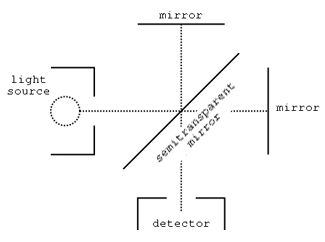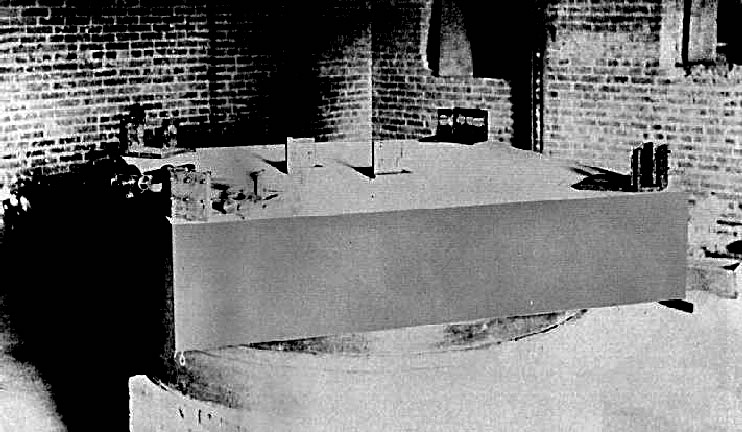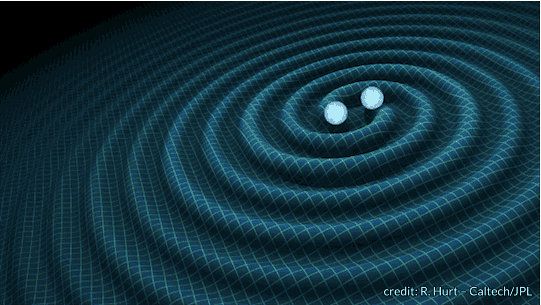Luminiferous aether
We must remember that all current ideas in science exist because we can’t think of any better explanations. Often, good science can persist even if the conclusions of its experiments are incorrect. Both of these concepts are evident in the theory of the Luminiferous Aether.
Historically, scientists believed that light, like sound, traveled in waves. For waves to transmit energy, they typically need a medium: sound waves travel through air, while water carries waves in the ocean. While it looks like the wave is physically propagating, it is simply the transfer of energy from one location to another. This led to the hypothesis of the luminiferous aether—an invisible substance thought to fill all of space and provide the medium for light waves to propagate through the universe.
The theory reached its peak in the 19th century when Maxwell's electromagnetic theory seemed to require an all-pervading aether, leading to sophisticated mathematical models and widespread acceptance among physicists.

While the theory of this works out very well, how could one test it? Theoretically, if there were a cloud of this aether material passing over us, then as the Earth plows through it, there should be an aether wind constantly passing over or through the Earth. If this is true, then this wind must have a direction. In 1887, the American physicists Albert A. Michelson and Edward W. Morley set out to test this.
They created a piece of equipment called an interferometer. The apparatus was designed on the theory that light would travel faster when propagating in the same direction as the aether wind and would travel slower when moving against or perpendicular to this wind.
The apparatus has two crossing arms with mirrors at the ends and a semi-transparent mirror in the middle. A semi-transparent mirror allows half of the light to pass through and reflects the other half. At the end of one of the arms is a light source, and at the end of the other is a detector plate.
When light enters the interferometer, it has a distinct wave pattern, much like ripples in a river that rise and fall at a steady rhythm. As these “ripples” encounter a semi-transparent mirror, half pass through to another mirror positioned directly behind, while the other half are reflected at a 45° angle toward a second mirror. If there were a current in the river or an "aether wind," this would affect the speed of the light waves along each path. The "ripples" then bounce off their respective mirrors and return to the semi-transparent mirror, where they recombine. Due to the influence of the aether wind, the wave that moved with the current would now have a different rhythm (or phase) compared to the wave that traveled perpendicular to it. When these two waves meet again, the differences in their rhythms can be detected. They create an interference pattern, revealing phase shifts due to any differences in speed or distance traveled. If a difference could be observed, they would then just need to keep rotating the setup and recording the differences to determine the direction of the aether wind.


Michelson and Morley's interferometric setup, mounted on a stone slab that floats in a trough of mercury
Their experiment didn’t find any differences in the speed of light, regardless of the orientation of their apparatus. While this experiment is widely known as one of the biggest "failures" in scientific experimentation, it established the foundation for amazing scientific discoveries in the future. From this experiment, Einstein and other scientists concluded that light has a fixed speed no matter the circumstances. Another outstanding success of this experiment is the apparatus that Michelson and Morley created. Through their rigorous attention to detail, they developed a piece of equipment perfectly suited to detect cosmic interferences that pass through the Earth.
A neutron star is an insanely dense object, one of the densest objects in the known universe, second only to black holes. When two neutron stars merge, they swirl around each other like water going down a drain until they collide. If we imagine objects with large gravitational fields compressing the fabric of space as Einstein described, we can picture this merger of neutron stars as a swirling, propagating disturbance in the cosmic "blanket" that we all inhabit. These propagating swirls in space-time are called gravitational waves. They have been theoretically proven, but to experimentally confirm them is challenging, as their effect on the Earth is extremely slight. This is where our old friend, the interferometer, comes back into play. As the waves pass through the Earth, they slightly compress and expand the planet. To detect these compressions and expansions, two very large interferometers are used.


The program that uses interferometers to detect gravitational waves is called LIGO (Laser Interferometer Gravitational-Wave Observatory). The theory is the exact same as in the Michelson and Morley experiment. As a gravitational wave passes through the Earth, one of the perpendicular arms will be compressed differently from the other, depending on the direction from which the wave arrives. This difference is measured by an interference pattern on the detector plate. To achieve this, each arm is 4 km long. The device is so sensitive that a truck driving in the distance can affect the machine’s readings. To ensure that what is received is a gravitational wave and not just background noise, there is a second interferometer on the other side of the globe that correlates its readings with the first machine.


